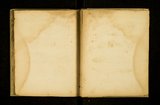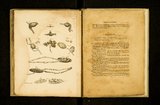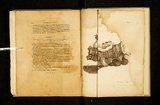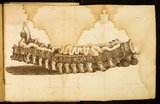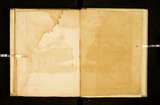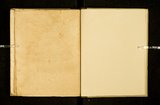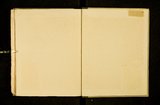| OCR Text |
Show The Situation and Carl/w ifl/Je lm‘grr Absorbent Vcrscls. The Silizaliniz and Course aft/Jr larger Abtorbcni Vasirls. but there are some other reasons for the position and course'of the larger absorbent vessels, which do not apply either to the larger arteries or nerves. of trunks of the absorbents on the extremitics, lie with the cutaneous veins, bones between them and external accidents: in the legs the arrangement rc- speeting the chance of injury, is exactly similar. The larger trunks of the absorbent vessels, in both extremities, are situated on the trunks of the an lCl'lCS. . _ . In the arms and legs the arteries lie on the bending stde of‘the Joints, by uhich means they are adapted to the figure media, or the middle state of the limb, between full llexion, and full extension; in short, that state in which a child is found in the womb during the latter months of pregnancy, and into which we naturally throw ourselves when asleep, and in bed: the consequence of this arrangement is, that the arteries are not extended in extending the limbs, and have not, of course, their diameters diminished, which would have been the case if they had been placed in the reverse stinatioii; the freedom of the circulation of the blood, through them, is thus perfectly preserved. The principal trunks of the absorbents, for the same reason, are situated on the larger arteries. with the [Ms-flit: and ('tfpbfllit‘ veins, and their branches in the arm, and with the lap/Jena Iiizrjnr and minor, and their branches in the lower extremity. Some reason ought to be given for this arrangement: the same reason which is given for the e. istence ofcutaiieous veins, will apply equally well for the existence ofthese cutaneous lymphatics; the cutaneous veins serve to transmit the blood to the heart, under the Circumstances of the violent and continued action of the surrounding muscles of the limbs, when of course, the deep-seated Veins must necessarily be compressed, and the circulation of the blood through them be nearly altogether prevented; these cutaneous veins also serve other purposes, for we find them transmitting a larger proportion ofblood dur- ing the summer, whether the muscles are in action or not; and they may serve other purposes yet unknown. For similar reasons I have not the least doubt that the cutaneous absorbents follow the course of the cutaneous veins. The larger absorbent vessels frequently run by themselves, at a dis- tanee from any larger artery or vein; this circumstance Ilaller also has noticed, and it was this that induced him to give them the name of " mm xvii/aria." "'hy they do this I do not yet know: retardations of the ab- sorbed fluids may be necessary in parts, or at times, in the whole of the The arteries, according to Dr. Hunter, took the bending side of the ioints on the arms and legs, because it was the shortest road to their places absorbent system; the infinity of convolution in some parts of this system, of destination, the aorta lying on the lower vertebrae of the loins; the makes this supposition at least probable. shortest road to the thighs was under Paupart's ligament; the shortest road lungs, heart, &c. rtin in greater numbers on the external surfaces of these thence to the calf of the leg was through the ham, and to the sole .of the viscera, apart also from arteries and veins, and form a distinct and peculiar appearance, perhaps for the same reason as the last mentioned vessels; this foot, behind the inner ankle; the shortest road to the arm was ev1dently by the axilla, and so afterwards as in the legs. The larger absorbents here also for the same reasons, follow the same course. IIallcr also supposed, that the absorbents follow the course of the arte- ries to receive an additional impulse from their pulsations in their diastole, but as they suffer equal retardation by the division of the stream of their lluids before they can receive their impulse, this reasoning is liable to great objection, if not totally erroneous. The reasons assigned may be sufficient to account for that distribution of the principal trunks of the absorbents, in which they arejoincd to the principal arteries on the extremities. But many, and indeed most ofthe second orde; o The absorbents on the liver, circumstance alone has often enabled me to discover them. There is much variety in nature, however; I have seen the liver without a single absor- bent appearing on its external surface, and I have seen the arteries occu- pying all that surface usually occupied by the absorbents. The larger ab- sorbents are also found running on the broad ligaments of the uterus, liga- ments of the liver, ligaments of the lungs, as the anatomists affect to call the passings of the peritoneum and pleura from these viscera to the neigh- bouring parts. NO other reason can be given for this, than that if the absorbents are not to run with arteries and veins, they are in greater security by passing along these ligaments, which are stronger, than if they passed unprotected ‘51 >«:.« <‘ In the arms the larger arteries and nerves are on the inside, and have the 93 .m. we": 92 |























































































































